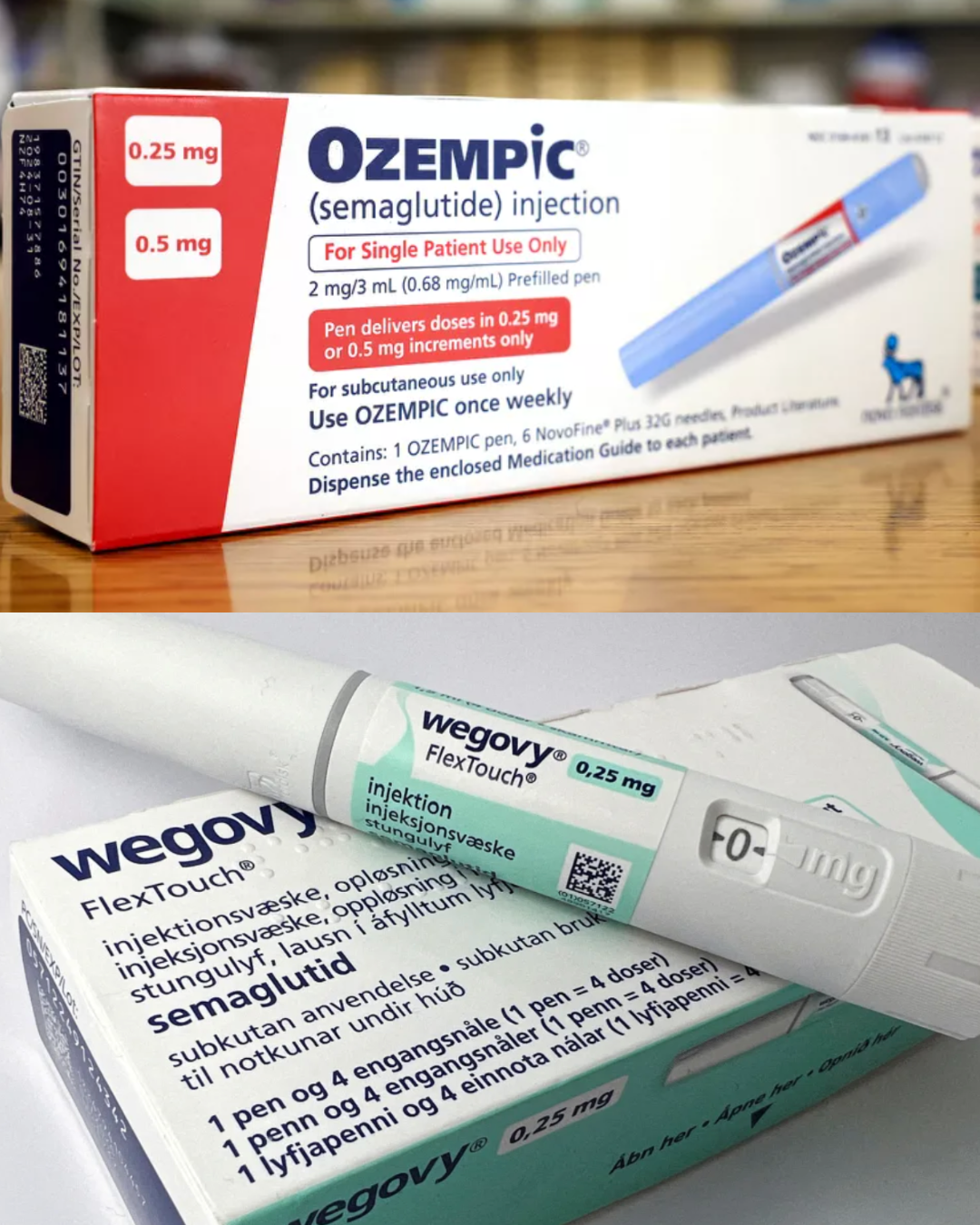 |
|
Over 36 months in this study, the cumulative incidence of NAION was significantly higher in those prescribed semaglutide (8.9%) than those on a non-GLP-1 receptor agonist (1.8%). Photo: People.com/CNN. Click image to enlarge. |
Since the 2017 FDA approval of semaglutide to treat type 2 diabetes and obesity, the use of this and other glucagon-like peptide receptor agonist (GLP-1 RA) drugs has rapidly increased; between 2021 and 2023, for example, GLP-1 RA prescriptions shot up by approximately 60%, the two most common brands being Ozempic and Wegovy. These drugs have since been linked to certain ocular effects, such as an increased risk of nonarteritic anterior ischemic optic neuropathy (NAION), which was demonstrated for the first time in a recent observational study.1 The results suggested an association between semaglutide use and an increased risk of NAION in patients with type 2 diabetes or obesity, though future research is needed to establish causality.
The retrospective matched cohort study used data from a single neuro-ophthalmology practice at Massachusetts Eye and Ear in Boston. A search of the patient database comprising clinic visits between December 2017 and November 2023 revealed 16,827 patients with no history of NAION. The researchers used propensity matching to assess whether prescribed semaglutide was associated with NAION in patients with type 2 diabetes or those who were overweight or obese. Confounders such as sex, age, systemic hypertension, obstructive sleep apnea, hyperlipidemia and coronary artery disease were all accounted for, as were contraindications for use of semaglutide.
Among 16,827 patients, 710 had type 2 diabetes; of these, 194 were prescribed semaglutide and 516 were taking a non-GLP-1 RA antidiabetic medication. The median age of patients with type 2 diabetes was 59 years, and 52% were female. Additionally, 979 patients in the total cohort were overweight or obese; of these, 361 were prescribed semaglutide and 618 were prescribed non-GLP-1 RA weight-loss medication. The median age of overweight or obese patients was 47 years and 72% were female.
| To read about another recent study linking GLP-1 drugs to an increased risk of NAION, click here. |
In the type 2 diabetes group, 17 NAION events occurred in patients prescribed semaglutide vs. six in the non-GLP-1 RA cohort. Over 36 months, the cumulative incidence of NAION was significantly higher in those prescribed semaglutide than those on a non-GLP-1 RA, with rates of 8.9% and 1.8%, respectively. The Cox proportional hazards regression analysis showed that patients with type 2 diabetes receiving semaglutide had a higher risk of NAION with a hazard ratio of 4.28.
In the cohort of patients who were overweight or obese, a total of 20 NAION events occurred in the semaglutide group vs. three in the non-GLP-1 RA group. The cumulative incidence of NAION for the two medication groups over 36 months was 6.7% and 0.8%, respectively. With an even higher hazard ratio than that of the type 2 diabetes group, the analysis again showed a higher risk of NAION for patients on semaglutide who were overweight or obese (hazard ratio: 7.64).
In their paper on the study, published in JAMA Ophthalmology, the researchers noted that the substantially increased risk of NAION observed in patients on semaglutide “appears not to be due to differences in baseline characteristics between the cohorts.” They proposed the possibility that “expression of the GLP-1 receptor in the human optic nerve and GLP-1 RA-induced enhanced sympathetic nervous system activity might influence optic nerve head perfusion and potentially increase the risk of NAION.”
Another notable finding was that the greatest risk of NAION appeared to be within the first year following the prescription of semaglutide, “a temporal association that supports a potential drug-induced risk of NAION,” the researchers pointed out.
An invited commentary on this study, also published in JAMA Ophthalmology, challenges the idea that the increased risk of NAION among semaglutide users resulted directly from the medication. “The conclusions drawn here were that a prescription of semaglutide was in temporal proximity to the NAION event,” the commentary author wrote.2 “GLP-1RAs taken once weekly may take four to five weeks to achieve steady state, while clinical effectiveness may be longer depending on many factors such as age, sex, body weight, and liver and kidney function. Therefore,” the author proposed, “could rapid normalization of the cardiometabolic system by GLP-1 RAs be the cause rather than a direct adverse effect of the drug?”
The commentary adds that further biological plausibility should be considered: “GLP-1 receptors are known to be expressed throughout the retina, within retinal ganglion cells, and within the central nervous system,” the author wrote. “GLP-1 RA drugs have been cited to suppress neuroinflammation and be neuroprotective both in the eye and the brain; one could therefore surmise that a NAION event may be milder and the outcomes better in people taking GLP-1 RAs.”2
The authors of the study and invited commentary agree that replication of these data is warranted in other real-world or clinical practice settings. “This evidence mandates (1) further data-driven research to confirm or refute the strength of this association; (2) mechanistic studies to determine biological plausibility; and (3) clear dialogue with our endocrinology and primary care physician colleagues,” the commentary concludes. Additionally, it contends, “The potential risk of NAION should not deter the directed use of GLP-1 RA in type 2 diabetes or in people living with obesity, at this time.”2
|


